This was published 3 years ago
A secret party? Immoral? Explaining who the ‘teal’ independents really are
By Royce Millar
As the election campaign nears its final fortnight, the Coalition is increasingly anxious about the threat posed by so-called teal independents in a swathe of seats from Goldstein in Melbourne to Wentworth in Sydney and Curtin in Perth.
Opinion polls point to the possibility that the independents and minor parties could hold the balance of power in a hung parliament, making the teal seat contests all the more significant.
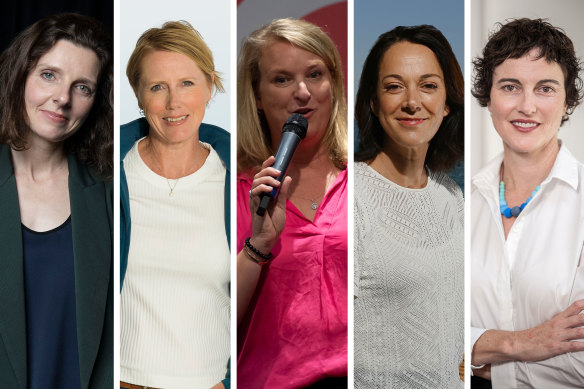
“Teal” independents Allegra Spender, Zoe Daniel, Kylea Tink, Sophie Scamps and Kate Chaney.Credit: Jessica Hromas, Elke Meitzel, Wolter Peeters, Nick Moir, Tony McDonough
Liberal Party anxieties were only heightened by the intervention of former prime minister Malcolm Turnbull, who told an American audience on Friday (AEST) that the way voters could avoid the “thrall” of a move to the right by the Coalition was “by voting for an independent who has a real chance of success”.
Coalition MPs are claiming the independents threaten “chaos” in parliament, and are “fake” because they are really part of a political party secretly controlled by cashed up corporate outsiders, especially Climate 200, the fundraising body founded by clean energy investor Simon Holmes a Court.
“These are independents that are running as a political party, that are organised as a political party and are funded as a political party,” embattled Kooyong MP and Treasurer Josh Frydenberg told a campaign launch in NSW last month.
Liberal MP Jason Falinski, under challenge from independent Dr Sophie Scamps in the northern Sydney seat of Mackellar, described election spending by the independents as “an immoral use of money”.
It’s true the current crop of independents is better organised and funded than the often quixotic independent campaigns seen in Australian politics.
“We’ve never seen anything so well organised and well funded,” says former Victorian Liberal Party director and retired lobbyist John Ridley.
So are they genuinely independent both of the parties and each other? Are they in fact a political party? And is all this somehow immoral?
Independents, parties and obstacles
Independents were the norm in Australian politics before the Australian Labor Party and conservative parties evolved through the 20th century and tweaked the electoral system to benefit themselves, making it ever more difficult for non-aligned candidates to run and win.
Australian National University politics lecturer Dr Jill Sheppard says the major parties gave an “incredible stability” to Australian politics, but that stability bred “laziness”.
“The parties have stopped listening,” she says, and their support has crashed accordingly.
At the 2019 election, the combined major party primary vote in the House of Representatives slumped to its lowest since World War II. Hence the resurgence of the new breed of independents, despite the obstacles they face.
The electoral advantages enjoyed by the parties include access to electoral rolls, staff and member salaries that are publicly funded, offices, cars, millions of dollars in taxpayer-funded pork-barrelling, party expertise and resources and year-round tax deductibility for donations.
“Everything in the system is designed to keep the system in place,” says Claire Ferres Miles, the independent candidate for Casey, a peri-urban seat south-east of Melbourne. The independents, she says, by collaborating and accepting substantial outside donations, are trying to level the playing field.
Is Climate 200 a party?
The Australian Electoral Act says that to officially register as a party, an organisation must have a constitution that includes an intention to endorse candidates and at least 1500 members.
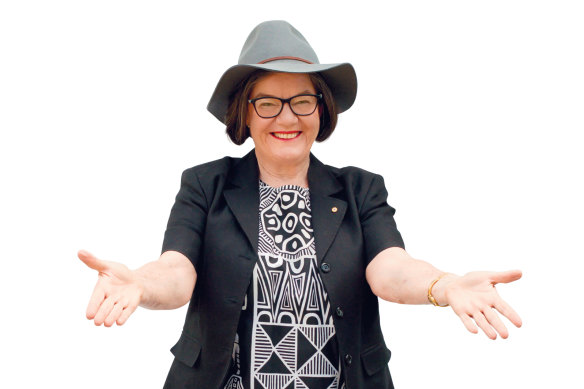
Cathy McGowan was the first giant-killer independent of the current era.Credit: Lucy Taylor
“They’re [the independents] not part of a political party in the legal sense,” says University of Queensland political professor Graeme Orr, who describes the current crop of independents instead as a “nascent political movement”.
The independents, their backers and local supporters do, however, share resources and strategies across seats, not unlike an embryonic party – co-operation that has been encouraged by trailblazing former independent MP turned teal mentor, Cathy McGowan.
The teal movement started more than a decade ago with the founding of the Voices of Indi, a community organisation that helped McGowan take the Liberal-held Victorian seat of Indi in 2013 from its incumbent, Sophie Mirabella. This inspired others such as Zali Steggall, who successfully challenged former prime minister Tony Abbott for the Sydney seat of Warringah in 2019.
McGowan describes the current independent phenomenon as a movement. “There is definitely a thread there,” she says. “Community engagement, quality candidates and effective campaigns.”
“Cross my heart and hope to die that all the campaigns we are supporting started from inside their own electorates.”
Climate 200 founder Simon Holmes a Court
As they argue that the teal movement is an undeclared party, their Liberal detractors point out that they also share policy priorities of climate, government integrity and gender equality – especially in wealthier urban electorates.
The urban independents insist this is simply because such issues are the high-order concerns in their communities, and one which the sitting conservative MPs are not adequately addressing. McGowan notes that in rural seats such as Indi, water, infrastructure, health and social services are more important.
In keeping with the Indi model, Voices groups have emerged wherever communities are frustrated enough to organise. Typically, Voices groups withdraw after choosing a candidate and a separate campaign group is formed. In reality, the two often overlap.
University of Sydney political scientist Anika Gauja says the allegation that the independents are a party makes no sense because their very point is that they are the antithesis of the major parties – top-down organisations in which members have to toe the line.
“The teal independents”, on the other hand, “have been backed by grassroots organisations that have chosen them”.
Show me the money
Volunteers and grassroots organising are only part of what makes a competitive campaign. Since Gough Whitlam popularised television campaigning in the early 1970s, big money has been increasingly important to electoral success. And that’s where Climate 200 comes in.
Holmes a Court, a former Liberal donor, founded Climate 200 in 2019 after he was expelled from Frydenberg’s fundraising arm, Kooyong 200, for publicly criticising Coalition energy policy. He describes Climate 200 as a “giving circle”, a vehicle through which thousands of donors have contributed more than $12 million to help independents in an electoral system they say is stacked against them.
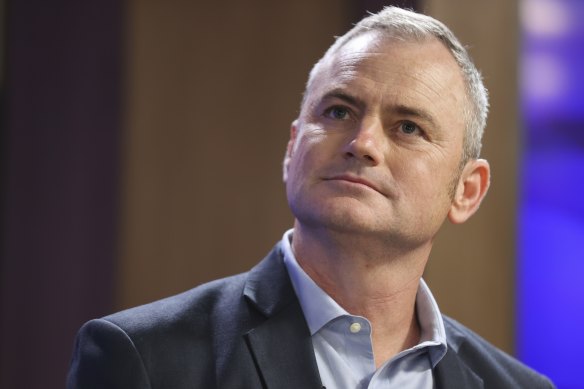
Simon Holmes a Court is backing candidates under the Climate 200 umbrella targeting Liberal MPs.Credit: Alex Ellinghausen
In 2022, Climate 200 is supporting 22 candidates with about half a million dollars each to the high-profile campaigns of Allegra Spender in Wentworth, Monique Ryan in Kooyong and Zoe Daniel in Goldstein.
Notable is that Climate 200-backed candidates tend to respond to questions about their funding in a uniform way, emphasising that Climate 200 contributions makes up less than half of their total budgets, rather than specifying amounts.
How Climate 200 works
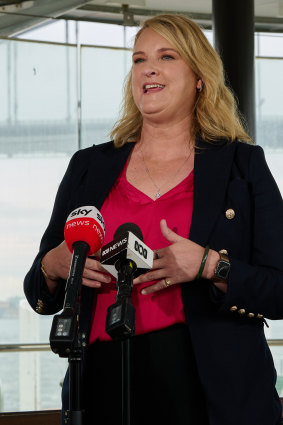
North Sydney independent candidate Kylea Tink.Credit: Michael Quelch
For those independents who seek its support – and not all have – Climate 200 has a small campaign management team that works with candidates and supporters to assess the potential for electoral success, including the strength of candidates, volunteer numbers and extent of local fundraising. An eligibility checklist includes a candidate and volunteer codes of conduct, eligibility to nominate for parliament under Section 44 of the Constitution, and a no-foreign-donations code.
On the policy front, Climate 200 requires broad commitments to a science-based response to the climate crisis, restoring integrity to politics, and advancing respect and safety for women.
Holmes a Court insists Climate 200 has no say in where Voices groups emerge or the candidate or policies they support. He notes, for example, that Climate 200 is not supporting a candidate in the vulnerable Liberal seat of Higgins in Melbourne’s inner east.
“Cross my heart and hope to die that all the campaigns we are supporting started from inside their own electorates,” he says. “Every single one is grassroots.”
But there is crossover and close working relationships between Climate 200 and some of the campaigns it supports.
Climate 200 advisers are involved directly in campaigns, including helping build up volunteer bases, on strategies for consulting communities about policy, and in campaign tactics and media.
Its media director, former ABC reporter Jim Middleton, is a paid member of Daniel’s campaign team in Goldstein and also provides paid media advice to North Sydney candidate Kylea Tink.
Holmes a Court is active in Ryan’s campaign against Frydenberg, though he says he recuses himself from Climate 200 funding decisions involving Ryan.
Spender, who is challenging Liberal MP Dave Sharma in Wentworth, says about one third of the $1.3 million she has raised is from Climate 200. She flatly denies Climate 200 has an influence on her policies.
Scamps, who is up against Falinski in Mackellar, says her policies are based on the community’s priorities and are not determined by any party, faction or outside group.
Steggall is defending her seat of Warringah and says she consults her community and relevant experts about policy, “not Climate 200 or any other candidates”.
Past party membership
The most damaging of the “fake” allegations against the independents stems from the revelation that two candidates running in traditional Liberal seats – Ryan in Kooyong and Kate Chaney in Curtin – are former members of the ALP. Ryan was a member between 2007 and 2010, Chaney for a period in 2021.
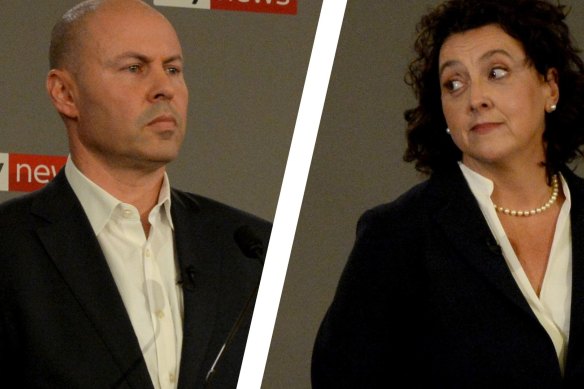
Josh Frydenberg and Monique Ryan at the debate at the Hawthorn Town Hall on May 5.
Both say they do not feel at home with either major party. Chaney also has close links to the Liberal party. Her grandfather was a Menzies-era MP and her uncle, Fred Chaney, a frontbencher in Malcolm Fraser’s administration.
Spender is the daughter of former North Sydney Liberal MP John Spender and the granddaughter of Sir Percy Spender, a Menzies-era MP. Daniel’s father, Peter, was actively involved in the ALP in Tasmania – which, she says, put her off Labor. Most say they are small-l liberal and have been swinging voters.
Influential Liberal-linked lobbyist Ian Smith says Climate 200-backed candidates such as Helen Haines (Indi), Rebekha Sharkie (Mayo), Spender and Daniel are best described as “centrist”.
Who would they back?
The Coalition and journalists have repeatedly pressed the teal independents on what they would do in the case of a hung parliament, but most have kept their powder dry. Sharkie, a Climate 200-supported Centre Alliance MP in South Australia, said recently that in a hung Parliament she would negotiate first with the Coalition because it is the incumbent.
But Prime Minister Scott Morrison has variously argued that a vote for the independents is a vote for Labor or for “parliamentary chaos”.
Invoking the spectre of Italian-style instability, Frydenberg said on Thursday: “We do not, in Australia, need the uncertainty, the chaos and the confusion of a hung parliament. We need the stability and strength and certainty of government.”
Most candidates are careful not to pre-empt what they would do, arguing that to do so would weaken their ability to negotiate action on their policies. Spender says her decision would depend first on how many seats each party wins and, then, on the outcome of her negotiations with both sides.
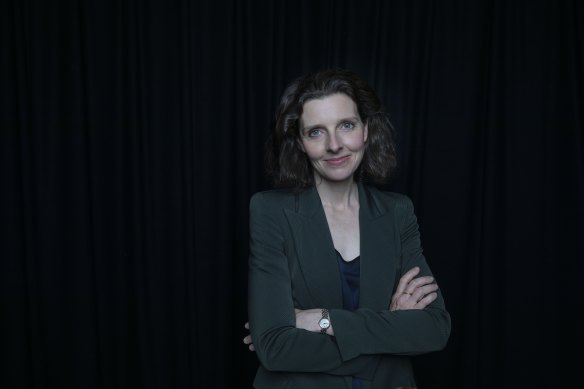
Independent candidate for Wentworth Allegra Spender.Credit: Jessica Hromas
Daniel says she would talk to the Coalition and Labor and assess which party is best able, and sufficiently trustworthy, to deliver on her policies. Steggall says she will factor in how many seats each side has, but that she will “vote on each bill on its merits, including supply bills”.
Ridley is a renowned small-l liberal who welcomes the idea of a hung parliament as an opportunity for independents to extract commitments about greater accountability and integrity. He says it makes strategic sense for the independents not to commit to one side or the other before the election.
“But it would be a travesty if the independents were to enter a formal arrangement, for instance, with Labor. If they were to accept ministerial positions, all bets are off. They would no longer be independent.”
Yes, but transparency
Seasoned observers say the debate around the teal independents and their relationship with outside influences such as Climate 200 has highlighted, perhaps inadvertently, major weaknesses in Australian political probity and electoral laws.
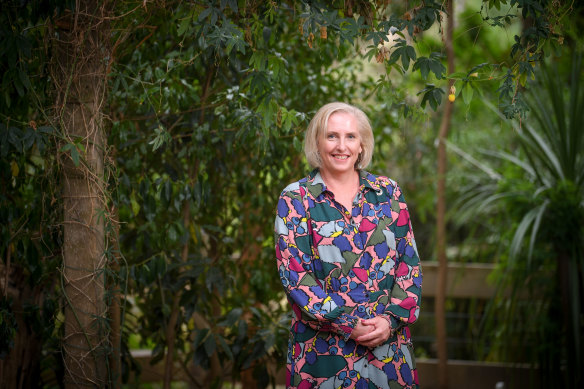
Voices of Casey candidate Claire Ferres Miles.Credit: Eddie Jim
Holmes a Court estimates that Climate 200’s $12 million combined with local fundraising will give the 22 independents a total of about $20 million for this election. Such heavy reliance on one avenue of funds – Climate 200 – will likely leave a cloud over the independence of the independents.
In their defence, the independents say they are having to raise and spend money to get the opportunity to address problems around political money and integrity. But in reality, their budgets are a pittance compared with the $500 million the Grattan Institute predicts will be spent on the campaign overall, with major parties and Clive Palmer’s UAP the biggest money spinners and spenders.
Voices of Casey candidate Ferres Miles acknowledges some public confusion around the independents and Climate 200, but says she is completely open about the $40,000 she has received – with no strings attached.
“I’m happy to be transparent about where my funding is coming from and I ask all candidates to do the same,” she says. “That’s the bigger story.”
Despite their complaints about the source of the independents’ money and their spending, the Coalition gives away next to nothing about its own money.
Electoral commission data shows that while the two major parties declared income totalling more than $150 million in 2020-21, the source of just 9 percent of that money was disclosed. In Kooyong alone, AEC filings show Frydenberg’s Kooyong 200 raised $2.8 million in the five years to June 30, 2021, without disclosing the source of any contributions.
Orr says it is not credible for the Coalition to complain about transparency and accountability when the infamously lax donations rules it could have reformed have not had a major update since 1983. He dismisses as hypocrisy the accusation that the independents’ spending is immoral.
“You can’t enter a campaign and then complain about the ground rules you have had almost a decade to change.”
Cut through the noise of the federal election campaign with news, views and expert analysis from Jacqueline Maley. Sign up to our Australia Votes 2022 newsletter here.